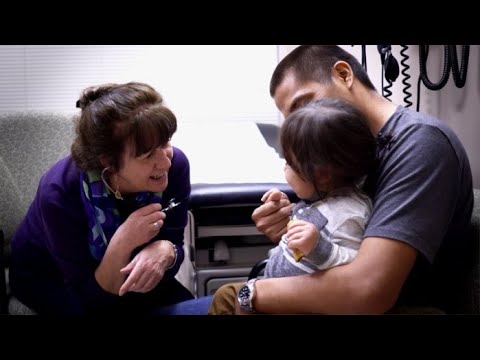Career Overview
Nurse practitioners provide a range of health services to patients. They also deliver preventive and continuous care toward managing patients' health.
Nurse practitioners are registered nurses with additional education and nursing experience. They work with physicians, other nursing colleagues and health-care providers or they may work independently. Nurse practitioners work for community health care centres, hospitals, long-term care facilities and rehabilitation centres. They may specialize in primary healthcare or acute care.
Job Titles
Duties
Nurse practitioners perform some or all of the following duties:
- Examine patients and take their medical histories and consult with physicians and other medical practitioners to evaluate patients' physical and mental health
- Order laboratory tests, X-rays and other diagnostic procedures
- Inoculate and vaccinate patients
- Advise patients and their families on health care including health promotion, disease, illness and accident prevention
- Collaborate with members of an interdisciplinary health team such as family physicians, therapists and nutritionists to plan, implement, co-ordinate and evaluate patient care in consultation with patients and their families
- Perform a patient advocacy role
- Prescribe and administer medications
- May co-ordinate or manage primary patient care
Earnings
Earnings is income that workers receive in exchange for their labour. Depending on the type of employment, earnings can be in the form of wages (hourly), salaries (fixed monthly or annual) or self-employed earnings.
Work Environment
# Workers Employed
665% Employed Full Time
62%Nurse practitioners work in community health centres, hospitals, clinics, long-term care facilities, and rehabilitation centres.
They use lifting devices and follow safety procedures to reduce the risk of workplace injuries and illness. New technologies and policies have resulted in a patient's reduced length of stay (i.e., more day surgeries are performed), which adds to the workload.
Nurse practitioners have to cope with the emotional aspects of working with the sick, injured and terminally ill, as well as patients' families.
Career Pathways
There is little to no mobility between nurse practitioner specializations without further training.
Some individuals may work as health-care aides or practical nurses before beginning education for registered nursing.
Registered nurses typically start in an entry level position in a medical or surgical unit.
Increasingly, new graduates are finding employment in community health and specialty areas where new graduates were not previously hired until they gained experience.
With additional certification, registered nurses may specialize in areas such as emergency care, oncology, psychiatric care, critical care, pediatrics, geriatrics, palliative care, rehabilitation or occupational health.
With experience and additional education, nurses can become clinical nurses, nurse educators, nurse managers, care coordinators, clinical nurse specialists and nurse practitioners.
Registered nurses may progress to supervisory and managerial positions with experience and additional courses.
Occupational Interests
It’s important to understand what kinds of occupations align with your interests.
For more about occupational interests visit Skills for the Future Workforce > Characteristics.
Here are the top occupational interest(s) for this career profile:
Education, Training and Skills
Nurse practitioners must complete a recognized college or university registered nursing program. Other training requirements include:
- Completion of secondary school with appropriate English, math and science courses for admission to nursing programs
- Completion of a bachelor's degree in nursing to practise as a registered nurse
- Passing the Canadian Registered Nurse Exam prior to being licensed
- Additional academic training or experience to specialize in a specific area of nursing
- A master's or doctoral degree in nursing for clinical nurse specialists, clinical nurses, nurse practitioners, nursing educators, nursing consultants and nursing researchers
- Registration with a regulatory body is required for nurse practitioners in all provinces and territories
The Canadian Nursing Association (CNA) offers a voluntary certification program that allows registered nurses to write a national exam in one of 20 areas of specialization. For a list of these programs, visit the CNA website.
Nurse practitioners who are certified for an occupation by a regulator elsewhere in Canada can apply for the same certification from the regulator in B.C. Under the terms of the Canadian Free Trade Agreement (CFTA), most applicants who are transferring their credentials from elsewhere in Canada will not be required to complete additional training or testing. However, the B.C. regulator may ask applicants to provide further information such as a letter of good standing, references, or criminal record check.
For those who trained outside of Canada and never received certification from any Canadian jurisdiction, a full assessment is likely needed. Most occupational regulators have a process for assessment and recognize internationally trained applicants.
Contact the British Columbia College of Nursing Professionals for details on how to apply for certification in B.C.
For information about labour mobility in Canada, visit www.workersmobility.ca.
View a list of Professional Regulatory Authorities in B.C.
Education programs in B.C.

Top Skills
Every job calls for a certain set of skills. Knowing those skills is the first step in finding a good career fit.
Here, you will find the 10 most relevant workplace skills. Some are more important to achieving success in a certain career than others. These skills may come naturally to you or you may need to gain them through education, training and experience.
See the list of work-related skills below, ranked in order of importance for this career. Check out the list and see if this career matches your skills—take that first step!
Giving full attention to what other people are saying, taking time to understand the points being made, asking questions as appropriate, and not interrupting at inappropriate times.
Understanding written sentences and paragraphs in work-related documents.
Using logic and reasoning to identify the strengths and weaknesses of alternative solutions, conclusions or approaches to problems.
Talking to others to share information effectively.
Keeping track of and assessing your performance, other individuals, or organizations to make improvements or take corrective action.
Understanding how new information could be used to solve current and future problems in making decisions.
Considering the relative costs and benefits of potential actions to choose the most appropriate one.
Being aware of others’ reactions and understanding why they react as they do.
Being able to solve novel, ill-defined problems in complex, real-world settings.
Actively looking for ways to help people.
Labour Market Statistics
Discover data, facts and information that have been gathered and analyzed. Learn about the characteristics of the economy and labour market in B.C.
Employment
Find out about employment types and trends by region and industry.
Employment
665Employment by Region







| Region | Employment | % Employment of this Occupation |
|---|---|---|
| Cariboo | 25 | 3.8% |
| Kootenay | 20 | 3.0% |
| Mainland/Southwest | 375 | 56.4% |
| North Coast and Nechako | 10 | 1.5% |
| Northeast | 0 | 0.0% |
| Thompson-Okanagan | 95 | 14.3% |
| Vancouver Island/Coast | 135 | 20.3% |
Labour Market Outlook
The B.C. Labour Market Outlook is a 10-year forecast of the expected supply and demand for labour in the province. It’s usually updated every year. The purpose is to provide British Columbians with the knowledge to make informed decisions on careers, skills training, education and hiring.
Forecasted Job Openings (2025-2035)
420Forecasted Job Openings
Forecasted Employment Growth Rate
Composition of Job Openings
Job Openings by Region (2025-2035)







| Region | Job Openings | Avg. Annual Employment Growth |
|---|---|---|
| Cariboo | 20 | 1.6% |
| Kootenay | 20 | 2.2% |
| Mainland/Southwest | 240 | 2.2% |
| North Coast and Nechako | Not available | Not available |
| Northeast | Not available | Not available |
| Thompson-Okanagan | 50 | 2.1% |
| Vancouver Island/Coast | 90 | 2.2% |
Industry Highlights
Learn about the opportunities in B.C.'s major industries, including employment trends, earning potential, locations of work and more.
Forecasted Job Openings by Industry
| Industry | Job Openings (2025-2035) |
|---|---|
| Health Care and Social Assistance | 410 |
Insights from Industry
A growing and aging population will require more health services, which will result in an increased demand for registered nurses. Government has annually increased funding for health services and facilities, which will contribute to the increase in new job openings for nurses.
The current demand for nurses in all regions and settings in the province is strong. But, the current supply is short, particularly in northern and rural regions. To address this situation, the B.C. provincial government has created additional training spaces in public post-secondary institutions and has offered loan forgiveness to nursing graduates who commit to work in under-served regions of the province.
The demand for nurses in specialty areas, such as operating rooms, emergency rooms and critical care is also strong, with many openings in the Mainland/Southwest region. In addition, experienced registered nurses and specialty nurses are also needed to teach students and train new graduates. The demand for nurse educators is increasing as many current nursing educators are nearing retirement. Other areas, such as medical-surgical units are also having a hard time recruiting and retaining registered nurses.
The role of nurses is expanding as governments consider ways to control increasing health-care costs. One approach is offering basic care through a mixed team that consists of doctors and other health professionals. Nurses would work alongside doctors and provide patient care in situations where a doctor's skills are not required. These workers are called nurse practitioners, which is a new, self-directed role for nurses.
The number of registered nurses working in residential/complex care is expected to decrease due to cost pressures and the current shortage of registered nurses. There is also a trend towards providing assisted living rather than intermediate care facilities. This will further reduce the employment opportunities for registered nurses in complex care. As a result, several health-care authorities are now introducing licensed practical nurses (LPNs) into home care nursing.
Resources
-
British Columbia College of Nurses and Midwives (BCCNM)www.bccnm.ca/Pages/Default.aspx
-
B.C. Ministry of Healthwww.gov.bc.ca/health
-
BC Nurses’ Union (BCNU)www.bcnu.org
-
Canadian Federation of Nurses Unions (CFNU)nursesunions.ca
-
Canadian Nurses Association (CNA)www.cna-aiic.ca/en
-
Nurses and Nurse Practitioners of British Columbia (NNPBC)www.nnpbc.com








